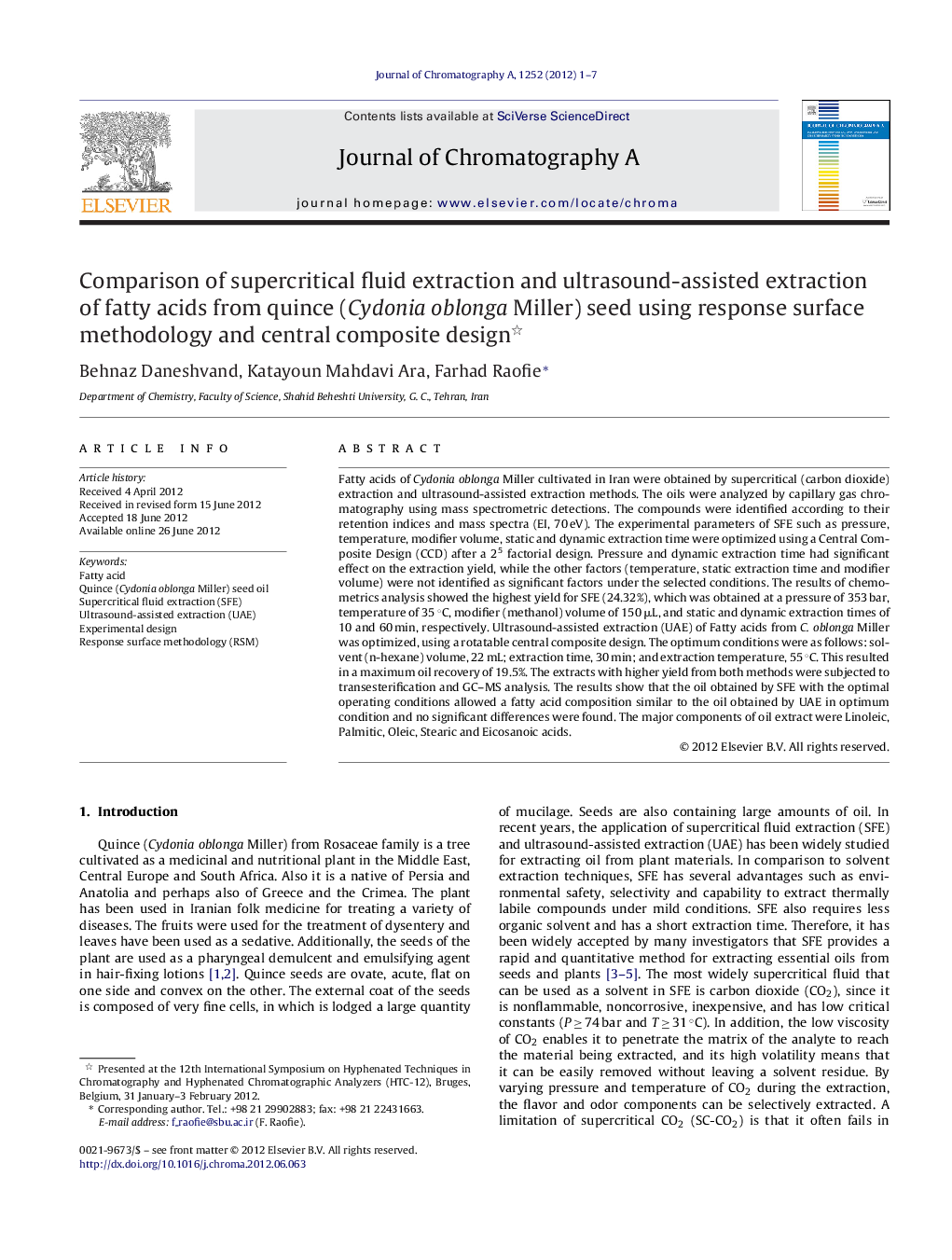| Article ID | Journal | Published Year | Pages | File Type |
|---|---|---|---|---|
| 1205634 | Journal of Chromatography A | 2012 | 7 Pages |
Fatty acids of Cydonia oblonga Miller cultivated in Iran were obtained by supercritical (carbon dioxide) extraction and ultrasound-assisted extraction methods. The oils were analyzed by capillary gas chromatography using mass spectrometric detections. The compounds were identified according to their retention indices and mass spectra (EI, 70 eV). The experimental parameters of SFE such as pressure, temperature, modifier volume, static and dynamic extraction time were optimized using a Central Composite Design (CCD) after a 25 factorial design. Pressure and dynamic extraction time had significant effect on the extraction yield, while the other factors (temperature, static extraction time and modifier volume) were not identified as significant factors under the selected conditions. The results of chemometrics analysis showed the highest yield for SFE (24.32%), which was obtained at a pressure of 353 bar, temperature of 35 °C, modifier (methanol) volume of 150 μL, and static and dynamic extraction times of 10 and 60 min, respectively. Ultrasound-assisted extraction (UAE) of Fatty acids from C. oblonga Miller was optimized, using a rotatable central composite design. The optimum conditions were as follows: solvent (n-hexane) volume, 22 mL; extraction time, 30 min; and extraction temperature, 55 °C. This resulted in a maximum oil recovery of 19.5%. The extracts with higher yield from both methods were subjected to transesterification and GC–MS analysis. The results show that the oil obtained by SFE with the optimal operating conditions allowed a fatty acid composition similar to the oil obtained by UAE in optimum condition and no significant differences were found. The major components of oil extract were Linoleic, Palmitic, Oleic, Stearic and Eicosanoic acids.
► SFE and UAE of quince seed were investigated. ► The effects of different experimental parameters on extraction recovery were studied using RCCD and RSM design. ► The major components of quince seed were: Linoleic, Palmitic, Oleic, Stearic and Eicosanoic acids.
